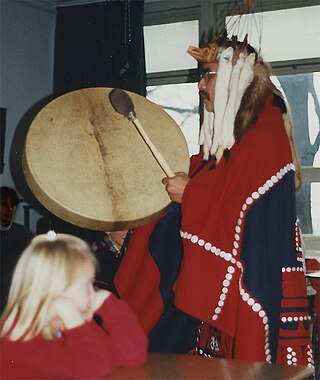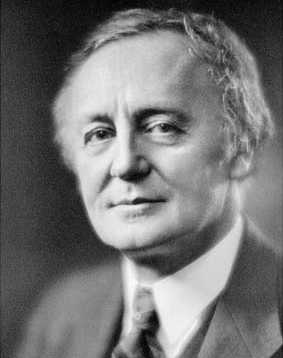Biography
She was born to Thomas and Margaret Hankin in Hazelton, B.C., and was considered, despite her mixed ancestry, the first white child born in that community. She was baptised by William Ridley, Bishop of the Church of England's Caledonia (northern B.C.) diocese. Her father, Thomas Hankin, sponsored a $3,000 (Cdn) potlatch feast to present the infant Constance to the large population of Gitksans who had come to live at Hazelton. Hankin, a former Hudson's Bay Company employee, had founded Hazelton on his English godmother's legacy, built a store there, and also provided founding investments in the cannery communities of Inverness, and Port Essington, B.C. Margaret Hankin was Tlingit on her mother's side, while her father was an HBC employee. Margaret spoke seven different First Nations languages and passed much of this profiency on to Constance. (Later, Margaret remarried, to Captain R. E. Loring, Indian Agent at Hazelton.)
While serving as Hazelton police interpreter in the trial of three Gitksans arrested in a near-battle between settler miners and Gitksans at Hazelton, Constance met a telegraphist named Eddie R. Cox, whom she married.
Starting in the 1920s, she served as interpreter and sometimes informant during some of the anthropologist Marius Barbeau's fieldwork among the Gitksan. (Some of Barbeau's use of her and her mother's ethnographic and historical information in print led to a recriminatory letter from Cox.) Barbeau eventually began to rely more on the Tsimshian chief William Beynon's services as interpreter in his Gitksan work.
In 1958, Cox served as interpreter when the anthropologists Wilson Duff and Michael Kew brokered an agreement with the nearby Gitksan community of Kitwancool (a.k.a. Gitanyow), arranging for some of the village's totem poles to be removed to the Royal British Columbia Museum for preservation. She also served as interpreter in creating the monograph by Duff that resulted.
She eventually moved to North Vancouver, B.C., with her husband when his employer transferred him there.

The Tsimshian are an Indigenous people of the Pacific Northwest Coast. Their communities are mostly in coastal British Columbia in Terrace and Prince Rupert, and Metlakatla, Alaska on Annette Island, the only reservation in Alaska.

Charles Marius Barbeau,, also known as C. Marius Barbeau, or more commonly simply Marius Barbeau, was a Canadian ethnographer and folklorist who is today considered a founder of Canadian anthropology. A Rhodes Scholar, he is best known for an early championing of Québecois folk culture, and for his exhaustive cataloguing of the social organization, narrative and musical traditions, and plastic arts of the Tsimshianic-speaking peoples in British Columbia, and other Northwest Coast peoples. He developed unconventional theories about the peopling of the Americas.
The Gispwudwada or Gisbutwada is the name for the Killerwhale "clan" (phratry) in the language of the Tsimshian nation of British Columbia, Canada, and southeast Alaska. It is considered analogous or identical to the Gisgahaast clan in British Columbia's Gitxsan nation and the Gisḵ'ahaast/Gisḵ'aast Tribe of the Nisg̱a'a. The Nisg̱a'a also call this group the Killerwhale Tribe, though the Gitxsan use the term Fireweed clan; Gisgahaast means literally "people of the fireweed."
The Laxsgiik is the name for the Eagle "clan" (phratry) in the language of the Tsimshian nation of British Columbia, Canada, and southeast Alaska. It is considered analogous or identical to identically named groups among the neighboring Gitksan and Nisga'a nations and also to lineages in the Haida nation.

Gitxsan are an Indigenous people in Canada whose home territory comprises most of the area known as the Skeena Country in English. Gitksan territory encompasses approximately 35,000 km2 (14,000 sq mi) of land, from the basin of the upper Skeena River from about Legate Creek to the Skeena's headwaters and its surrounding tributaries. Part of the Tsimshianic language group, their culture is considered to be part of the civilization of the Indigenous peoples of the Pacific Northwest Coast, although their territory lies in the Interior rather than on the Coast. They were at one time also known as the Interior Tsimshian, a term which also included the Nisga'a, the Gitxsan's neighbours to the north. Their neighbours to the west are the Tsimshian while to the east the Wetʼsuwetʼen, an Athapaskan people, with whom they have a long and deep relationship and shared political and cultural community.
The Gitga'at are one of the 14 tribes of the Tsimshian nation in British Columbia, Canada, and inhabit the village of Hartley Bay, British Columbia, the name of which in the Tsimshian language is Txałgiu. The name Gitga'ata in the Tsimshian language means "people of the cane". The Gitga'ata, along with the Kitasoo Tsimshians at Klemtu, B.C., are often classed as "Southern Tsimshian," their traditional language being the southern dialect of the Tsimshian language. Most Tsimshian-speakers in Hartley Bay today, however, speak the form of the language shared by villages to the north. Their band government is the Hartley Bay Indian Band, aka the Gitga'at First Nation.
The Giluts'aaẅ are one of the 14 tribes of the Tsimshian nation in British Columbia, Canada, and one of the nine of those tribes making up the "Nine Tribes" of the lower Skeena River resident at Lax Kw'alaams, B.C. The name Giluts'aaw means literally "people of the inside". Their traditional territory is the area around Lakelse Lake, near present-day Terrace, B.C., at the Skeena River.

Port Essington was a cannery town on the south bank of the Skeena River estuary in northwestern British Columbia, Canada, between Prince Rupert and Terrace, and at the confluence of the Skeena and Ecstall Rivers. It was founded in 1871 by Robert Cunningham and Thomas Hankin and was for a time the largest settlement in the region. During its heyday it was home to an ethnic mix of European-Canadians, Japanese-Canadians, and members of First Nations from throughout the region, especially Tsimshians from the Kitselas and Kitsumkalum tribes. In the Tsimshian language, the site of Port Essington is called Spaksuut or, in English spelling, "Spokeshute", which means "autumn camping place". This also became the Tsimshian name for the town of Port Essington, and was conferred on Spokeshute Mountain, which stands above and behind the community. It sits on the traditional territory of the Gitzaxłaał tribe, one of the nine Tsimshian tribes based at Lax Kw'alaams. In 1888, the anthropologist Franz Boas visited Port Essington, interviewing Haida and Tsimshian individuals and establishing a working relationship with Odille Morison, the Tsimshian linguist, who lived in Port Essington.

William Beynon (1888–1958) was a Canadian hereditary chief of the Tsimshian Nation and an oral historian; he served as ethnographer, translator, and linguistic consultant to many anthropologists who studied his people.

Arthur Wellington Clah (1831–1916) was a Canadian First Nations employee of the Hudson's Bay Company at Lax Kw'alaams, B.C., who was also a hereditary chief in the Tsimshian nation, an anthropological informant, a Methodist missionary, and an extensive diarist.
Henry Wellington Tate was a Canadian oral historian from the Tsimshian First Nation, best known for his work with the anthropologist Franz Boas.
The Laxgibuu or Laxgyibuu is the name for the Wolf "clan" (phratry) in the language of the Tsimshian nation of British Columbia, Canada, and southeast Alaska. It is considered analogous or identical to identically named clans among the neighboring Gitksan and Nisga'a nations.
Viola E. Garfield was an American anthropologist best known for her work on the social organization and plastic arts of the Tsimshian nation in British Columbia and Alaska.
Ligeex is an hereditary name-title belonging to the Gispaxlo'ots tribe of the Tsimshian First Nation from the village of Lax Kw'alaams, British Columbia, Canada. The name, and the chieftainship it represents, is passed along matrilineally within the royal house called the House of Ligeex. The House of Ligeex belongs to the Laxsgiik.
Walter George Wright was a Canadian hereditary chief of the Tsimshian from the community of Kitselas, near Terrace, British Columbia, whose extensive knowledge of oral history was published posthumously in book form as Men of Medeek.
Marjorie Halpin was a U.S.-Canadian anthropologist best known for her work on Northwest Coast art and culture, especially the Tsimshian and Gitksan peoples.
Wilson Duff was a Canadian archaeologist, cultural anthropologist, and museum curator.
John James Cove was a Canadian anthropologist known for his work with the Gitksan First Nation of northern British Columbia. He was a Professor of anthropology and sociology at Carleton University in Ottawa, Ontario, Canada.
Robert Cunningham (1837–1905) was a British-Canadian lay missionary turned entrepreneur who founded the town of Port Essington, British Columbia.





